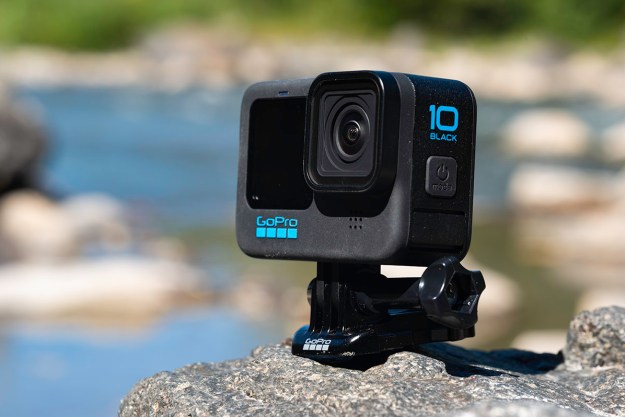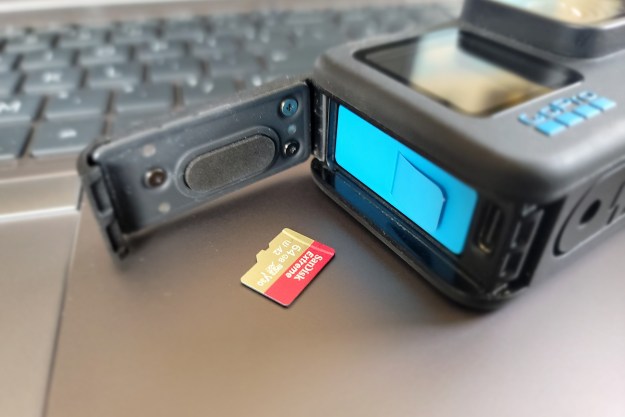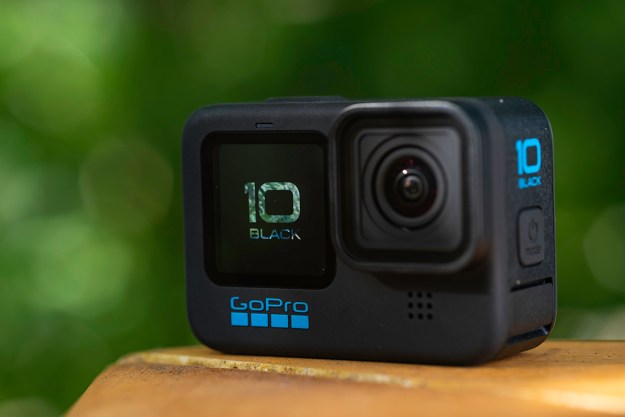Looking like a robotic arm, the core product is a three-axis gimbal that provides infinite rotation for pan, roll, and tilt. This means that no matter what the activity, Sybrillo can keep the camera level. Quadruple BMX backflip? No problem. On Kickstarter, the video demonstration showed an impressive amount of shake-reduction compared to a non-stabilized GoPro, although this by itself isn’t anything we haven’t seen before from other gimbals. Where things really start to get interesting is with the software.
With a smartphone app, users can wirelessly set the camera angle with the swipe of a finger. What’s more, place your phone in a VR headset like Google Cardboard (or Sybrillo’s own cardboard headset) and the gimbal will mimic your movement – rotating, panning, and tilting as you look around. (It’s probably not recommended to strap your phone to your face before careening down a mountain on a bike or parachuting out of an airplane, but it could come in handy when you’re watching someone else do those things.)
The app can also be used to program motion control sequences, which is especially useful for creating time-lapse videos. Multiple camera moves can be created, strung together, and reordered at will, making it possible to begin a time-lapse with a slow pan that transitions into a tilt without having to set up two separate shots.
With a standard GoPro mount on its base, Sybrillo is fully compatible with existing GoPro accessories, although it does add nearly six inches of height and 10.6 ounces of weight, which may limit its use in some situations. Still, it is designed to be taken nearly anywhere, and can even survive under three feet of water, for up to thirty minutes.
Since the Kickstarter campaign launched just six days ago, Sybrillo has already climbed well above its $50,000 goal ($75,200 at the time of writing). The campaign has 23 days remaining, although many rewards tiers are already sold out. New backers who want to receive a Sybrillo will need to contribute at least $229, and wait until March 2017 before they receive it. Note that Sybrillo isn’t a name that we have heard of, nor does it have any previously successful product to ride on. But if it lives up to its promise of being the most versatile GoPro accessory ever made, it should be well worth wait.
Editors' Recommendations
- The 15 best GoPro accessories in 2024
- I tried to replace my GoPro with this new phone and its clever camera
- GoPro Hero 10 Black vs DJI Action 2 vs. Insta360 One RS: Clash of the action cameras
- ReelSteady makes GoPro Player ‘reel’ useful for filmmakers
- GoPro keeps recording as parrot steals it from tourists and flies off




